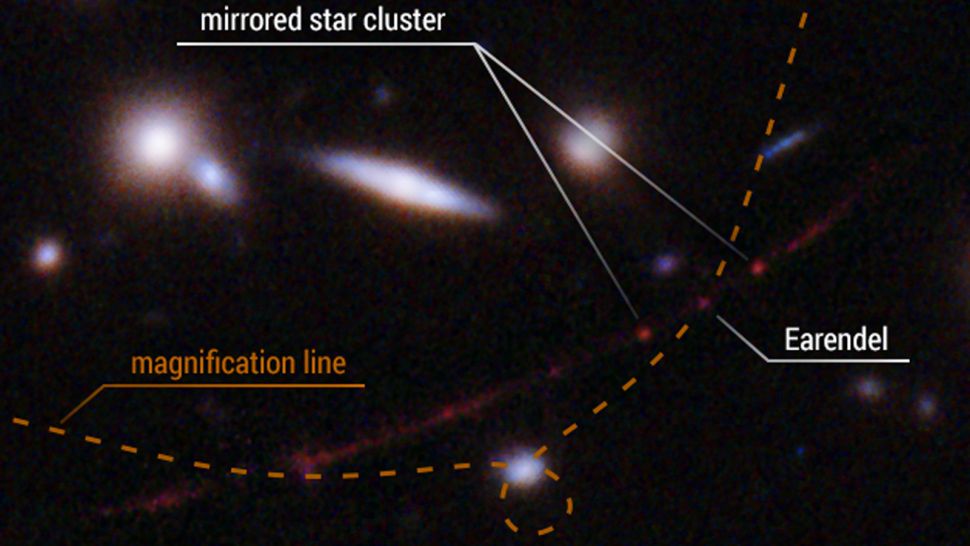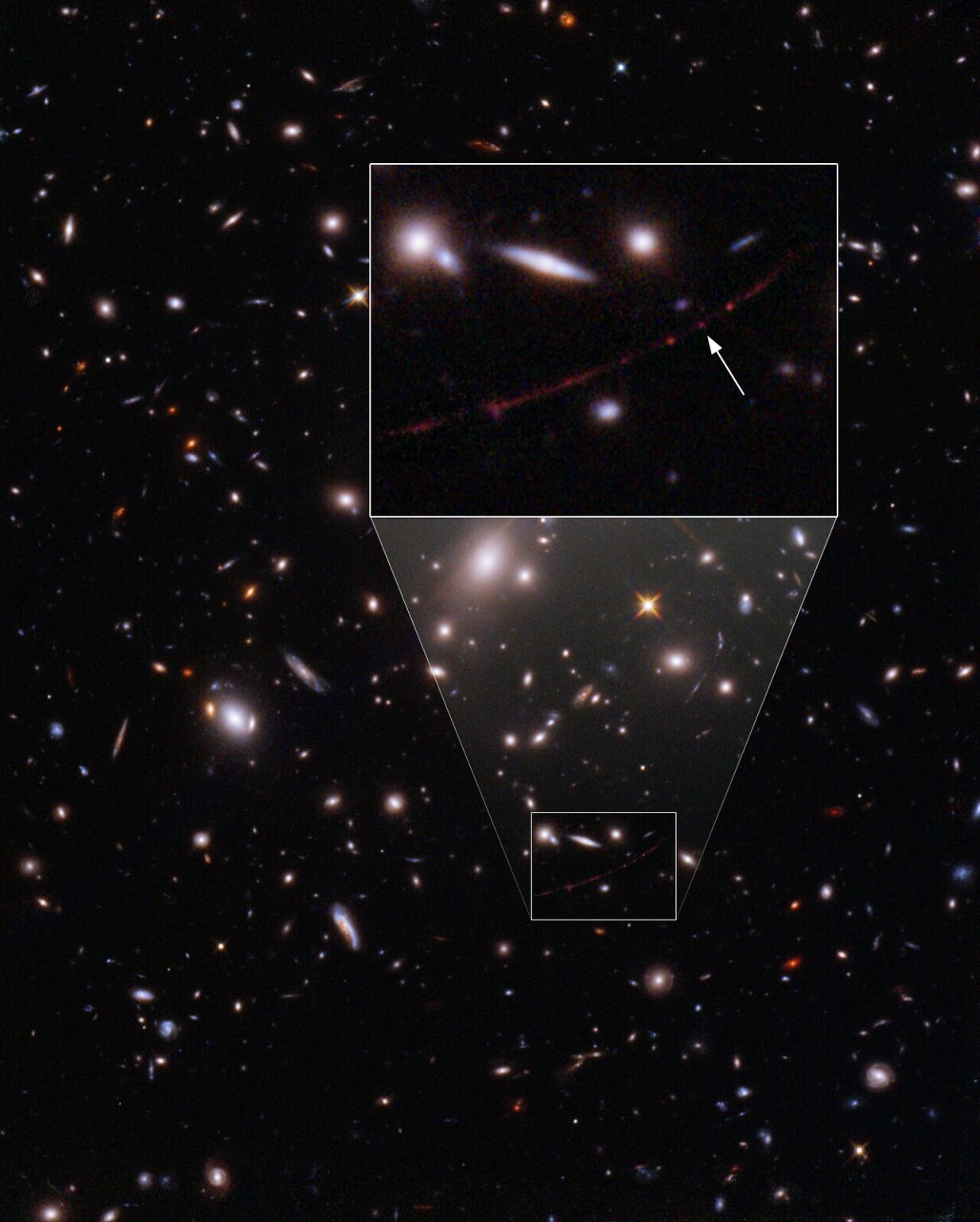The Hubble Space Telescope has pleased all astronomy fans with a new, extraordinary achievement. It managed to capture the light of an extremely distant star that formed less than a billion years after the Big Bang. To date, this is the farthest known luminary in the Universe.

The record holder star was named Earendel, which means “morning star” or “shining light” in Old English. According to the researchers, it has a redshift of 6.2. This means that the light emitted by it took 12.9 billion years to reach Earth. Taking into account the factor of the expansion of the Universe, now Earendel (more precisely, its remnants — the star has long become a supernova) is located at a distance of 28 billion light years from Earth.
According to researchers, at the time of its existence, Earendel was 50 times more massive and millions of times brighter than the Sun. But, given the giant distance, under normal circumstances Hubble could never see the star. Fortunately, it found an “assistant”. It turned out to be a huge cluster of galaxies WHL0137-08, located between Earendel and Earth. Its gravity serves as a lens, greatly amplifies the light of more distant background galaxies.

After studying an image of one of them, astronomers were surprised to find an object that turned out to be a single star system. Before, at such distances, scientists could at best identify star clusters. To understand how much Hubble’s discovery “raised the bar,” just note that the previous record holder star found by the telescope in 2018 existed when the Universe was about 4 billion years old.
In the future, astronomers plan to continue studying Earendel using the James Webb Space Telescope. The chemical composition of the luminary represents a great interest for researchers, since it was formed before the universe was filled with heavy elements. If the analysis shows that the Earendel consists only of primary hydrogen and helium, it will become the first known luminary of the so-called population III, which includes the very first stars in the Universe that formed immediately after the Big Bang.
According to https://esahubble.org

